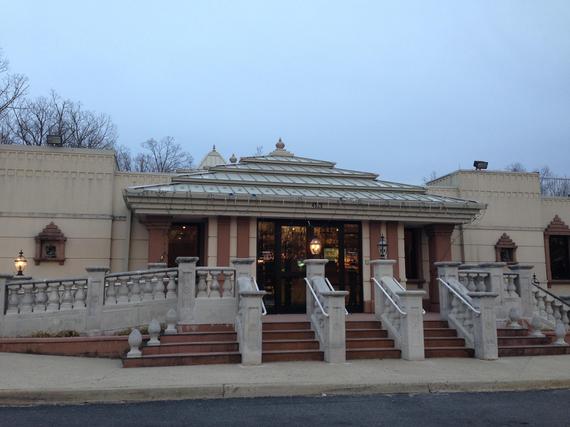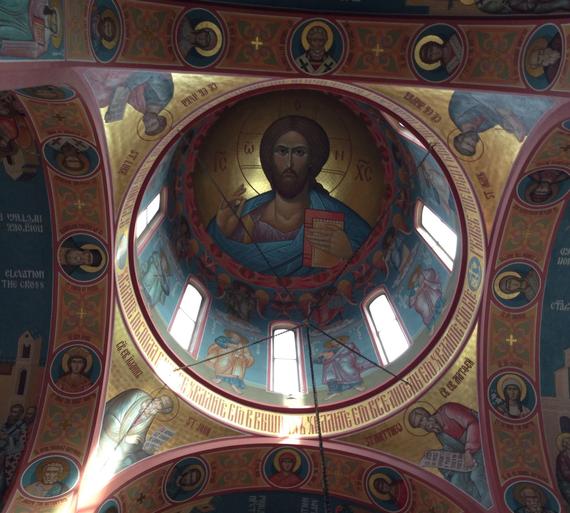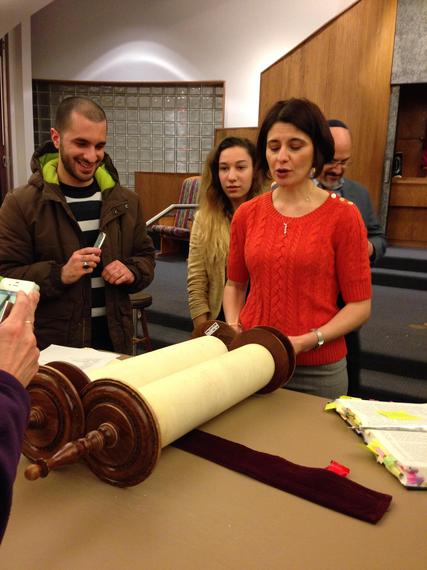"O mankind, indeed We have created you from male and female and made you peoples and tribes that you may know one another."
Quran 49:13
Eboo Patel, the author of "Sacred Ground," indicates in his phenomenal book that "people without much knowledge of other religions, and who have little contact with those from other communities, are far more likely to harbor negative attitudes towards those traditions and communities." I completely agree, but it would be a lot worse if people are given the wrong information.
A new ad campaign hit the streets of Washington, D.C., two weeks ago. The ad, which calls for a halt of US foreign aid to Muslim countries, features Adolf Hitler having a sit-down meeting with anti-Jewish Islamic leader Haj Amin al-Husseini during World War II and was created by the American Freedom Defense Initiative and led by conservative pundit Pamela Geller.
Even though Geller, who heads the group who bought the ads, declares that they did not mean to be provocative, the ads have already offended many Muslims. If the campaign continues, 20 buses will carry the ad in the next two weeks.
Although it's a local ad and just placed in the capital, it has received very much attention from all over the country. Muslim Americans in particular are very upset with the image of Muslims the ad promotes. However, some Americans say even though the ad does not have a positive image of Muslim society, it falls under freedom of speech and letting people say what they want to say.
Well, when it comes to freedom of expression, I understand where they are coming from. Still I don't think the issue here is the type of speech that is OK to promote on public transportation vehicles. Of course people have the right to say what they want to say, but when it comes to the government, it is different because it is the government's mission and responsibility to promote domestic peace. With such forms of political speech -- to me and many others it is hate speech -- people might be incited to violence, and when people come together, anything can happen, from a flame to a large fire. It's the government's duty to ensure safety on public transportation so it shouldn't support such acts.
Radjhani Hindu Temple, Chantilly, VA
The more we discover a new religion and the more we interact with religious communities, the more we realize just how similar we are and will hopefully stop accusing each other. Americans have to keep in mind that the transformation of America's religious landscape explores the implications of this new religious reality and should ask who "we" are. The new "we" in the US is represented by each ethnic group and those groups are the natural instruments of this transformation. Immigrants over the last 30 years have increased the diversity of America's religious life. Moreover, recent immigrants are different from those of previous generations. With the convenience of technology, they have stronger ties with their homelands. Thus, the transformation of America's religious landscape implies a new religious reality. The new Americans in the US represent every ethnic group, which are the natural instruments of this transformation.
I took a "Faith in Neighborhood" course with Lucinda Mosher Th.D., at the Hartford Seminary last semester for my graduate studies. It was an eye-opener course for me. During the course, we visited five different temples and I was inspired by all of them in a different way. It was amazing to see generations, from babies to grandparents, together in huge flourishing crowds at ceremonies. The size of these crowds was surprising to me. We always heard or saw about Christmas and Easter in the news, on movies, or at super market shelves, and maybe in the last ten years Hanukah and Passover began appearing too. Yet, until I had taken this course, I didn't know how little my knowledge was of other religions and how big certain religious communities happened to be in the US, especially Hinduism and Sikhism.
In the Guru Gobind Sikh Foundation after having a vegetarian community meal (langar) we were served Chai Latte as part of the ritual.
Nowadays, in America people on the street or in crowds who look at others wearing certain clothing or accessories (i.e., the headscarf, the Sikh turban, a crucifix necklace, the kippah or the civara) might think they cannot relate to those individuals because they belong to a different religion, but it would be very easy for them to find many religious similarities if they had the correct information about other beliefs. Even though different religious communities gather in different temples, wear different clothing and use different languages, movements and patterns in their rituals, the holiness, spirituality and love they share is exactly the same. In "A New Religious America," Diana Eck quotes a Hindu, Dr. Somayaji: "We Hindus say Ekam sat vipraha bahudha vadanti: Truth is one, people speak of it in many ways."
Unfortunately, we have a tendency to focus on differences and neglect similarities. This has caused a lot of problems since the start of civilization. However, the world has become a global village and now it has become necessary for us to educate ourselves about different religions. It is like being multilingual: When you are multilingual, you can connect with more people. If we, with great sensitivity, open our eyes, hearts and minds to all religions, we could understand each other better and our connections would grow deeper. To effectively contribute to our mutual culture, you have to know where you stand and stick to your roots. In this way we could build a stronger community together.

I am with Venerable Losang Tendrol at The Guhyasamaja Center, Fairfax,VA
Instead of "otherizing" or discriminating, we should be conscientious about protecting religious freedom and actively engage all religions in the common work of civil society in order to improve our understanding of other faiths. We need to create more frequent opportunities to get to know each other and adopt a mature, constructive perspective of religious differences. It is about time we learned the lessons of history, politics and sociology.
Diversity is a growing reality and without pluralism there will be nothing but more difficulties. With good intentions and hard work, pluralism can bring unity to the nation. Attitudes, knowledge and the personal relationships of individuals are important contributing elements to pluralism. We should be open to learning about our differences and similarities in order to understand each other and get along well.
St Nicholas Orthodox Cathedral, VA
To effectively contribute to a mutual culture, you have to know your ground and stick to your roots. In this way we can build a stronger community together. This would improve our understanding of other faiths. We need to create frequent opportunities to get to know each other and adopt a more mature and constructive perspective on religious differences. Without pluralism, there will be nothing left but more difficulties. With good intentions and hard work, pluralism can bring unity to all nations, and unity among nations. Attitudes, knowledge and personal relationships between individuals are important factors of pluralism. We should be open to learning about our differences and similarities in order to understand each other and get along well. Interfaith cooperation should be considered a social norm.
At the Northern Virginia Hebrew Congregation, Cantor Irena Altshul showed us a "Tanak"
In this era, pluralism and interfaith dialogue are the only ways to give communities the chance to grow stronger in harmony and unity. People have to educate themselves in building interfaith literacy. I think it is not enough when religious communities conduct some interfaith dialogue. There should be official education for that in schools and interfaith dialogue should be added to curriculums from the elementary level all the way to college because every responsible citizen who wants to discover the new religious America has to learn about the living religions in the country.
Since the US is religiously the most diverse nation in the world, it is crucial that we educate ourselves about different religions. It is like being multilingual: When you are multilingual you can connect with more people. If we open our eyes, hearts and minds to all religions with great sensitivity, we can understand each other better and our connections will be deeper. As Diana Eck says in her book "A New Religious America," we should be brave in our approach to people of different faith traditions and define our faith "not by its borders, but by its roots." I think it should be a principle for every one of us in today's world.

"Faith in the Neighborhood" students and Lucinda Mosher Th.D. at Adams Center (Sterling, VA) after jumah.
For more Arzu Kaya-Uranli click




